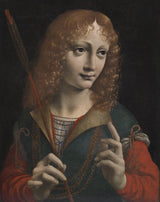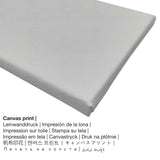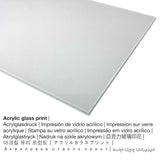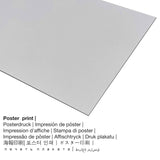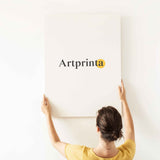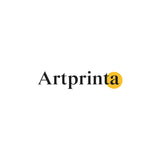Marco d'Oggiono, 1480 - Eserese nke onye ntorobịa dịka Saint Sebastian - mbipụta nka mara mma.
Ụtụ gụnyere. Mbupu gbakọrọ na ndenye ọpụpụ.
a nka ochie sere Portrait of a Youth as Saint Sebastian onye na-ese ihe sere ya Marco d'Oggiono. The painting has the following dimensions Nhazi: 47,5 x 41 x 4 cm (18 11/16 x 16 1/8 x 1 9/16 na); Emebereghị: 30,5 x 24 cm (12 x 9 7/16 na). Oil on wood, transferred to pressed wood was applied by the Italian painter as the medium of the work of art. Nowadays, this piece of art belongs to the The Cleveland Museum of Art's digital art collection, which is located in Cleveland, Ohio, United States nke America. Site n'ikike nke - Velọ ihe ngosi nka nke Cleveland (license: public domain). In addition, the artpiece has the following creditline: Ụgwọ nke ụlọ ọrụ John L. Severance Fund. Ndozi n'ime Eserese format ma nwee oke nke 1: 1.2, nke pụtara na ogologo bụ 20% mkpụmkpụ karịa obosara.
Kedu ihe masịrị gị?
Anyị na-enye ihe dị iche iche dị iche iche na nha maka ngwaahịa ọ bụla. Họrọ n'ime nhọrọ ngwaahịa ndị a ugbu a ka ị kwekọọ na mmasị gị na nha na akụrụngwa:
- Mpempe akwụkwọ mmado ebipụtara na akwa akwa: The Artprinta poster print is a UV printed flat canvas with a slightly rough surface finish, which resembles the actual artwork. Please bear in mind, that depending on the absolute size of the poster print we add a white margin of something between 2-6cm round about the print in order to facilitate the framing with your custom frame.
- Aluminom ihe eji eme ihe: An Aluminium Dibond print is a material with a true depth effect. The non-reflective surface make a contemporary look. A direct Direct Print on Aluminum Dibond is your perfect introduction to art replicas with alu. The bright parts of the original artwork shine with a silk gloss, however without glow. The colors are luminous, details appear very clear, and there’s a matte appearance you can literally feel.
- Mbipụta iko acrylic (nke nwere ezigbo mkpuchi iko): A glossy acrylic glass print, often denoted as a an art print on plexiglass, makes the original work of art into brilliant décor. The work of art is being custom-made with state-of-the-art UV printing technology. The great upside of an acrylic glass art print is that contrasts and also image details become more exposed thanks to the very subtle gradation in the picture.
- Kwaaji: The UV printed canvas material applied on a wooden stretcher frame. Also, a canvas print generates a cosy and comfortable feeling. Canvas prints are relatively low in weight, which implies that it is easy and straightforward to hang your Canvas print without extra wall-mounts. Canvas prints are suited for any type of wall.
Ozi dị mkpa: We try everything in order to describe our products as accurate as possible and to display them visually on the different product detail pages. Although, the colors of the printing material, as well as the imprint may diverge marginally from the image on your monitor. Depending on your settings of your screen and the quality of the surface, colors might not be printed one hundret percent realistically. Because all fine art prints are processed and printed by hand, there may also be minor variations in the motif's size and exact position.
Ozi ederede ahaziri
| Ụdị ngwaahịa: | nka nka |
| Usoro mmeghari: | mmeputakwa n'ụdị dijitalụ |
| Usoro mmepụta: | Mbipụta UV ozugbo (mbipụta dijitalụ) |
| Ihe ngosi: | German mere |
| Stockdị ngwaahịa: | mmepụta ihe na-achọ |
| Eji ngwaahịa a chọrọ: | mgbidi gallery, mgbidi mgbidi |
| Nhazi nka nka: | usoro eserese |
| Oke akụkụ onyonyo: | 1: 1.2 |
| Nkọwa nke oke ihe onyonyo a: | ogologo bụ 20% mkpụmkpụ karịa obosara |
| Nhọrọ dị: | ígwè ebipụta (aluminium dibond), acrylic glass print (nwere ezigbo mkpuchi iko), mbipụta akwụkwọ mmado (akwụkwọ kwaaji), akwụkwọ akwa akwa. |
| Mbipụta kanvas (akwa akwa na etiti ihe ndọtị) dị iche iche: | 50x60cm - 20x24", 100x120cm - 39x47", 150x180cm - 59x71" |
| Mpempe iko acrylic (nwere ezigbo mkpuchi iko) nha: | 50x60cm - 20x24", 100x120cm - 39x47", 150x180cm - 59x71" |
| Mbipụta akwụkwọ mmado (akwụkwọ kwaaji): | 50x60cm - 20x24", 100x120cm - 39x47" |
| Nhọrọ nha nke mbipụta aluminom (aluminium dibond material) | 50x60cm - 20x24", 100x120cm - 39x47" |
| ụba: | agunyeghi |
Data ndabere gbasara ọrụ nka
| Aha ọrụ nka: | "Portrait of a Youth as Saint Sebastian" |
| Nhazi nka: | sere |
| Otu sara mbara: | nka ochie |
| Century: | 15th narị afọ |
| Afọ nka: | 1480 |
| Ogologo afọ nka nka: | 540 afọ |
| Ọkara nke ihe osise izizi: | oil on wood, transferred to pressed wood |
| Nha ihe osise izizi: | Nhazi: 47,5 x 41 x 4 cm (18 11/16 x 16 1/8 x 1 9/16 na); Emebereghị: 30,5 x 24 cm (12 x 9 7/16 na) |
| Ụlọ ihe ngosi nka: | Velọ ihe ngosi nka nke Cleveland |
| Ebe ebe ngosi nka: | Cleveland, Ohio, United States nke America |
| Ebe nrụọrụ weebụ ihe ngosi nka: | www.clevelandart.org |
| Akwụkwọ ikike nka: | ngalaba ọha |
| Site n'aka: | Velọ ihe ngosi nka nke Cleveland |
| Ebe kredit nke ọrụ nka: | Ụgwọ nke ụlọ ọrụ John L. Severance Fund |
Ihe omuma ihe nka
| Ihe nkiri: | Marco d'Oggiono |
| Aha ndị ọzọ: | Uggiono Marco d', D'Oggiono Marco, Oggionno Marco d', Uggione Marco d', Oggione, Uggioni Marco, Oglono Marco d', Oggiono Marco, Marco da Ogion, Oggionno Marco de, Ugginni Marco d', marco d'oggione, M. d'Oggione, Oggiono Marco d', Marco d'Oggioni, Uggini Marco d', Uglon Marco d', Marco, Marco d' Oggiono, Marco d'Oggiono, Marco d'Ogion coetaneo di Leonardo, Marco d'Ogion |
| okike nke onye nka: | nwoke |
| Nationality: | Italian |
| Ọrụ nke onye na-ese ihe: | onye na-ese ihe |
| Obodo obibi: | Italy |
| nhazi ọkwa: | nna ukwu ochie |
| Nwụrụ anwụ: | 62 afọ |
| Amụrụ n'afọ: | 1462 |
| Amụrụ na (ebe): | Oggiono, mpaghara Lecco, Lombardy, Italy |
| Nwuru: | 1524 |
| Obodo ọnwụ: | Milan, obodo Milano, Lombardy, Italy |
Ederede a bụ ikike ọgụgụ isi ma chekwaa ya site na nwebisiinka © | Artprinta.com
What does the The Cleveland Museum of Art say about the artwork painted by Marco d'Oggiono? (© - Ụlọ ihe ngosi nka nke Cleveland - Velọ ihe ngosi nka nke Cleveland)
Sebastian, a bodyguard for the Roman emperor Diocletian, was shot with arrows and was eventually drowned for his commitment to Christianity. While the arrow alludes to Saint Sebastian, the young man’s clothing dates to the late 1400s, indicating that this is a contemporary portrait, rather than an image of the historical saint. This haunting image was influenced by the paintings of Leonardo da Vinci (1452–1519), particularly in the artist’s use of smoky shadows (called sfumato) to model the flesh. It was probably painted by Marco d’Oggiono, a Milanese artist who worked in Leonardo’s studio.

